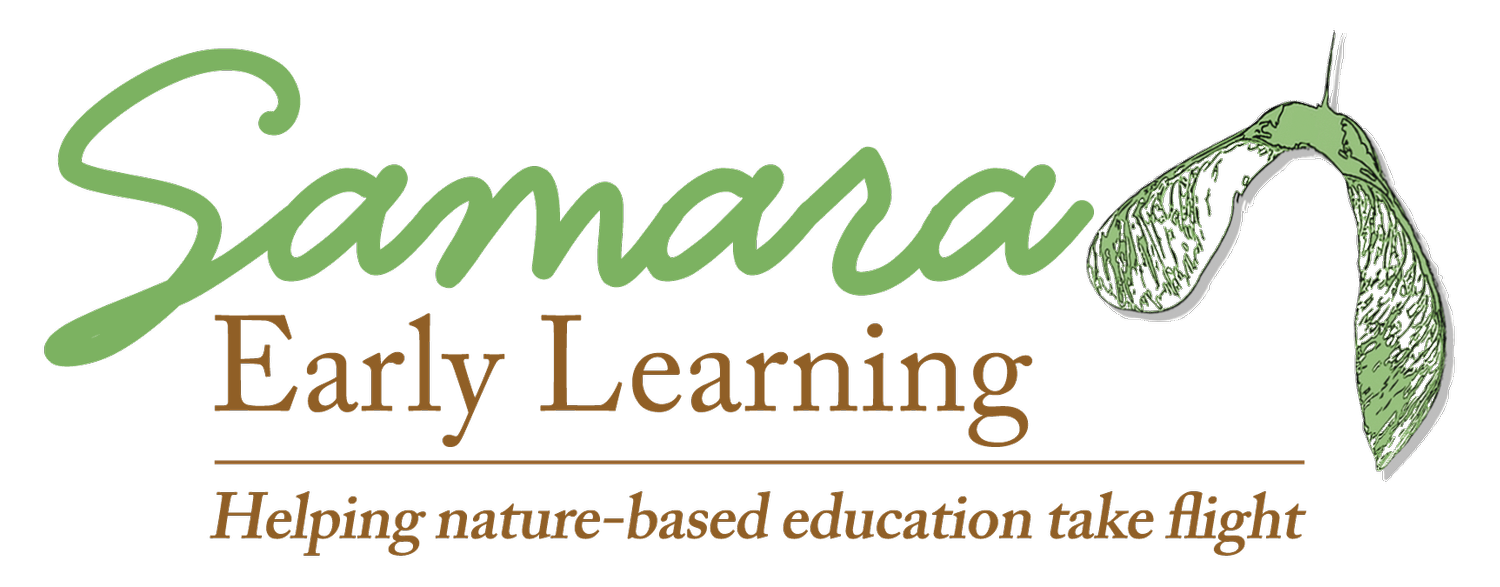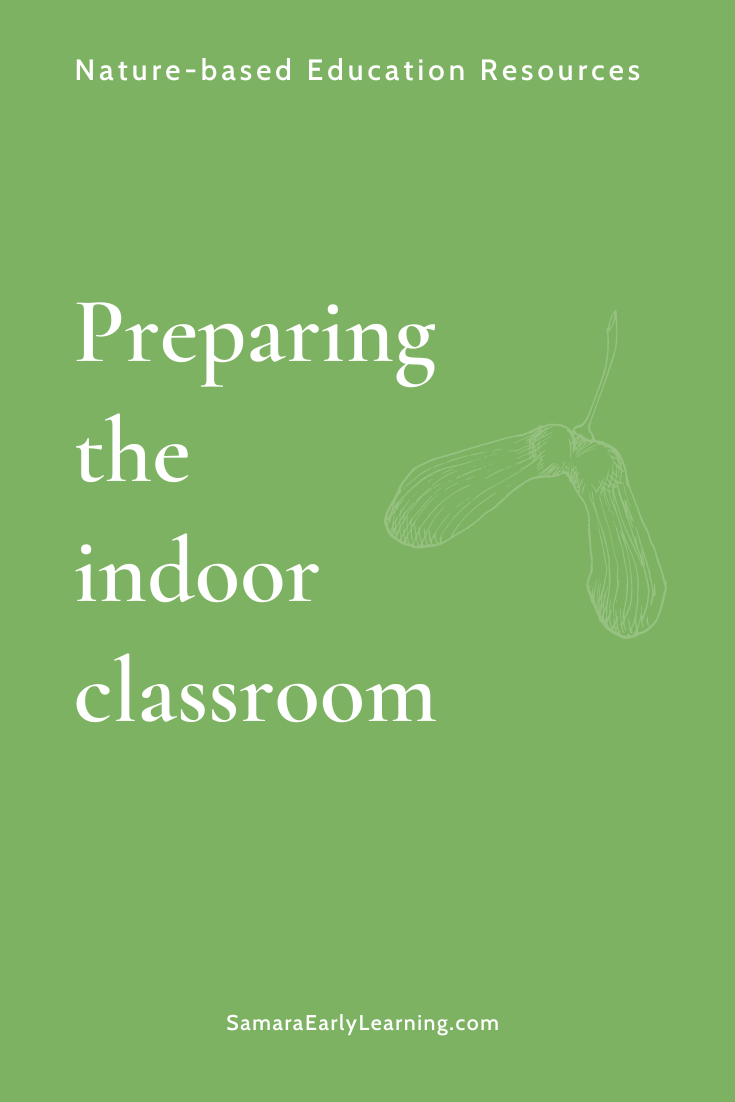Preparing the indoor classroom
This post originally appeared in Dr. 瑞秋一. Larimore’s weekly Samara newsletter on August 8, 2023. If you’re interested in receiving these emails, scroll to the bottom of this page to subscribe. Please note, this post may include affiliate links. If you click through and pay for a product, Samara Early Learning will be compensated at no cost to you.
As many are embarking on a new school year it seems a good time to revisit the three learning spaces in 自然-based education–the indoor classroom, outdoor natural play area, and areas beyond the play area–and how we can prepare them for children’s play.
When educators are first embarking on their 自然-based journey, the Inside classroom tends to be one of the first places for 自然 integration. In fact, it’s the first step in the Seed Journey inside 格罗夫购物中心.
另外, the start of the school year is typically when we tend to purchase the most consumable supplies, 设备, 玩具, and other materials. I want you to maximize your money by being intentional about the materials you choose so they encourage deep learning and hopefully learning 与 自然.
在这两个 Preschool Beyond Walls 和 Nature-based Education Rating Scales, we presented principles for selecting materials in the Indoor classroom. As much as possible use these principles to select materials for a 自然-based classroom:
Choose natural over manufactured materials. 例如, 有松针, 其他的叶子, and seeds in the art area has the potential for deeper conversation than plastic beads—and no one-time plastic use!
Emphasize authentic instead of cartoon-like. Consider 当地的 鸟的书 or even a poster of real, 当地的 birds instead of a caricature poster.
避免陈词滥调. 在可能的情况下, bring materials into the classroom that disrupt some of the stereotypes that exist about 自然. Wolves don’t have red eyes. Owls aren’t any wiser than other animals 和y don’t wear glasses, 读书, and wear graduation caps.
代表 当地的 自然. Does the space look like our place in the world or does it look like any other early childhood classroom? 例如, add books to the library of 当地的 plants and animals rather than those far off.
反映 & represent a diversity of people having 积极的 户外体验. Consider adding photos of the children 和ir families enjoying the outdoors. Bring in storybooks that show people from diverse backgrounds enjoying the outdoors.
Connect the indoors to the outdoors. A prime example is a bird feeder outside the classroom window and binoculars, 鸟的书, and a counter indoors.
Take advantage of science & 数学学习. 例如, an indoor activity could be matching pattern shapes like a spiral to images of plants and animals found in your area (see #4!).
奖金的原则: Virtually everything in the room should have meaning to the children. Rather than purchasing an alphabet line, have the children go outdoors and build the letters out of natural materials, then take their photos, and hang the photos on the wall. Now the letter line matters to the children!
Beyond the physical environment, it’s important to consider how teacher-led activities indoors connect to children’s 户外体验. I’ll share more on this in a few weeks when we talk about connecting the Inside, 外, and Beyond experiences and spaces.
I hope this gets your wheels turning as you begin preparing your Inside classroom.
Keep changing lives,
瑞秋
瑞秋一. Larimore, Ph值.D., Chief Visionary of Samara Learning

